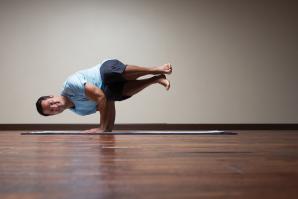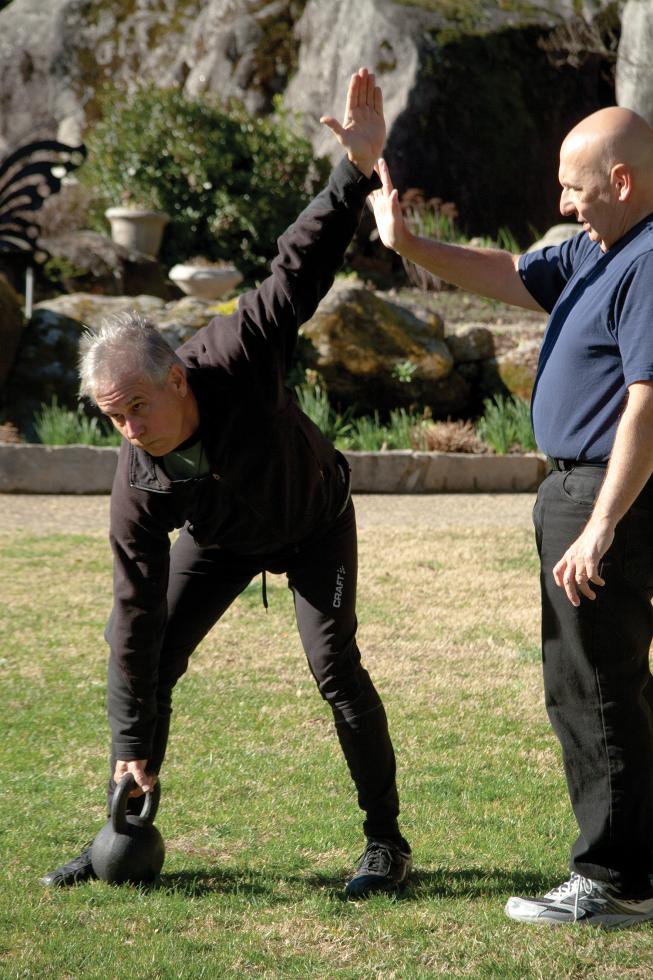When Jim and Diane Williams were forced to admit their age, they also had to admit that many things they took for granted in their younger years now needed a little more attention and discipline.
Principal among them was maintaining good physical fitness, which for both of them meant committing to a major lifestyle change. For two people in their 60s, that was much easier said than done. He’s a founding principal of Williams + Paddon Architects + Planners Inc., where each day he is reminded of how hard the recession has hit the construction industry. She’s a busy independent contractor, and both serve on the boards of local planning and nonprofit organizations.
For many executives, there’s barely time to eat properly, much less plan and stick to an exercise regimen. Worse, even when getting to the gym is possible, workouts might not be meeting specific needs.
“With top-level executives, you’re talking about someone with a completely different physiology,” says Steve Bertges, founder of Bertges Endurance and Strength Training, which offers specialized fitness programs for busy professionals. “They’re at the fringes of hormonal balance and are really more like people driving race cars or high-performance aircraft.”
Indeed, the long hours, high intensity and constant demands on their decision-making abilities have put executives in a category where the risks of heart attack, high blood pressure, divorce and depression are higher, on average, than in the public at large. That’s hardly a desirable statistic and is largely because they aren’t taking care of themselves.
“When you let fitness slip, you start a downward spiral that makes you less effective in the things you thought were higher priorities,” Williams says. “I’ve always believed you can do your job better if you take care of your body.”
The research certainly backs him up. Together, the American College of Sports Medicine and the National Strength and Conditioning Association have a stack of research a foot high that speaks to the mental and emotional benefits of being fit. Those benefits range from fewer sick days to greater mental acuity, higher capacity for handling (and recovering from) stress, better sleep and greater self-confidence.
Nancy Floyd doesn’t need the research. As a self-described “serial entrepreneur,” her own experience is enough. She’s the founder and managing director of Nth Power LLP, a venture capital firm. She typically works 90 hours a week, not counting the frequent travel needed to evaluate the 800 companies Nth Power examines each year or to attend meetings for the six boards on which she sits. She started an executive fitness program 10 months ago.
“I’m 56 years old, and, while I’ve always managed to stay in shape, this has taken me to a new level,” she says. “My body shape has changed, I’ve lost weight and I’ve never felt stronger in my life. That’s brought about a newfound confidence and energy level with the ripple effect of bringing my business acumen up to a new level as well.”
Although there are some common denominators, options for executive fitness programs are as varied as the executives themselves. Any credible program should start with an overall assessment, however, and then lead into a customized program designed for specific needs and goals.
“Fundamentally, what we do is figure out how we can get them healthy and change their lifestyle,” says Monica Monedero who, as the owner of Get Fit with Monica, provides in-home and in-office training programs, primarily for busy women. “Once they get fit, we want them to stay fit.”
Bertges agrees, emphasizing the difference customization can make in the results. “It’s like the difference between training for martial arts and training to be a body builder with extra attention on the person’s physiology at the minute they come to exercise,” he says. “If an exec comes to workout and already has a heart rate of 120, they don’t need more stressful exercise. Instead, I’ll slow it down to a lower intensity.”
The challenge is to provide a program that gets results for people who may only have 45 minutes, twice a week, to exercise.
“I try to do [a total] body routine that works all the muscles in a quick but beneficial pace,” says Mike Mendoza, personal trainer with the Capital Athletic Club. “The idea is to make anaerobic exercises, like working with weights, into something that offers aerobic benefits.”
Costs for these kinds of programs are almost always a function of what people need for their specific program. A program with one workout a week for three months will be much less expensive than a daily workout for six months overall, but the cost of each workout might be more. Monedero offers month-to-month, three-month and six-month programs, with rates ranging from $33 to $53 per hour. Bertges offers programs that are all individually designed, so costs can range from $120 for one month to several thousands of dollars over the course of a year.
Few would argue the cost is reasonable, but perhaps it’s best to consider them in context.
“When I decided to get in shape again, my initial thought was to visit a health spa for a week,” Floyd says. “Then I looked at the numbers and realized for about the same price as a one-week spa vacation I could get two or three months of regular workouts and training. The value proposition became very clear.”
Given the well-documented benefits, both for the individual and the organization, it’s fair to question whether “fit” executives will become the expectation from a company’s leadership and its investors.
“I don’t know if it will become a new requirement, but executive fitness programs could evolve into less of a luxury and more of an investment companies make in their top people,” Bertges says. “In that sense they could be in the same category as MBA programs or business training courses; they’re just something companies do to keep their people at their top level of performance.”
Floyd agrees, but adds that her own experience in getting fit has colored how she as a venture capitalist evaluates the companies on her radar.
“I certainly have a bias toward company leaders who have a fitness regimen,” she says. “One of the most important things we do is the due diligence research on the executive team, and I look for evidence that they’re taking steps to stay healthy.”
If nothing else, there’s also something to be said for simply feeling better all the time and what that might mean for society at large. Bertges tells the story of one client, a school administrator, who once told him he hated doing the workouts, but they helped him have a better day.
“He told me that if he has a better day, 50 teachers might have a better day, and if 50 teachers have a better day, then more than a thousand students might also have a better day,” Bertges says. “That’s why I made this work my focus.”
Recommended For You

Hurts So Good
Yoga is good for you, but be careful boys
I’ve always snickered at yoga.It just seemed ridiculous. But men are flocking to yoga the way we once, in the ’80s, took to this thing called “jogging.” We’re learning that yoga bestows a slew of health benefits — physical, mental, even sexual. But new research also points to increased health risks for men, and this muddies the decision.

Love Hurts
The pain of learning tennis is more than worth the health gains
It started with a girl. She had played tennis in college. Desperate to impress her, I challenged her to a match. Sure, I had never played, but I could hold my own.



